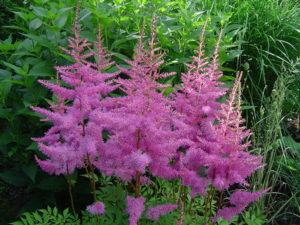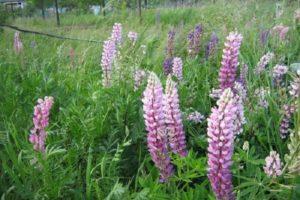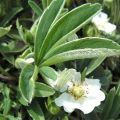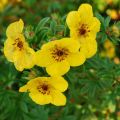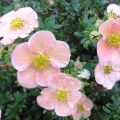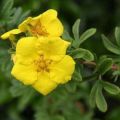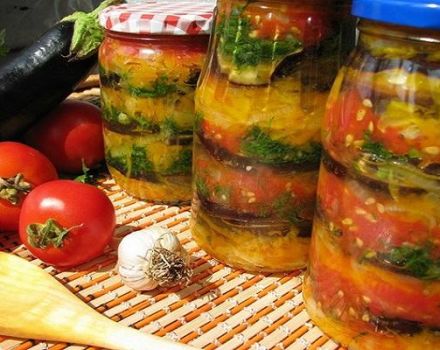Description of varieties of Nepalese Potentilla, application in landscape design
Another beautiful plant that can decorate the area near the house is the tall Himalayan species. We are talking about Nepalese Potentilla. It is considered a favorite of gardeners for many reasons, among which are unpretentiousness in care and resistance to diseases.
Content
- 1 Description and characteristics of Nepalese Potentilla
- 2 Main advantages and disadvantages
- 3 Varieties and varieties
- 4 The nuances of growing a plant
- 5 Useful tips for flower care
- 6 Protection of Potentilla from diseases and pests
- 7 How to properly propagate a plant?
- 8 Nepalese Potentilla in landscape design
Description and characteristics of Nepalese Potentilla
The stems of the plant reach a height of 45-60 cm, straight and densely branched. Covered with palm leaves. The color of the greenery depends on the place where the shrub grows. Ranges from light pistachio to dark green.
The external outlines of the leaves of Potentilla are similar to the leaves of strawberries. The same can be said about their structure. The flower cups reach 3.5 cm in diameter. There are 5 petals around, the color of which varies from light pink to dark red.
Main advantages and disadvantages
The root system of Potentilla is saturated with useful elements, therefore it is widely used in medicine. Cinquefoil copes with diseases of the gastrointestinal tract and improves the work of metabolic processes.
Herbalists recommend Potentilla for atherosclerosis and cardiovascular diseases. Decoctions from rhizomes help with stomatitis and tonsillitis. Tinctures remove all kinds of inflammation in the oral cavity.
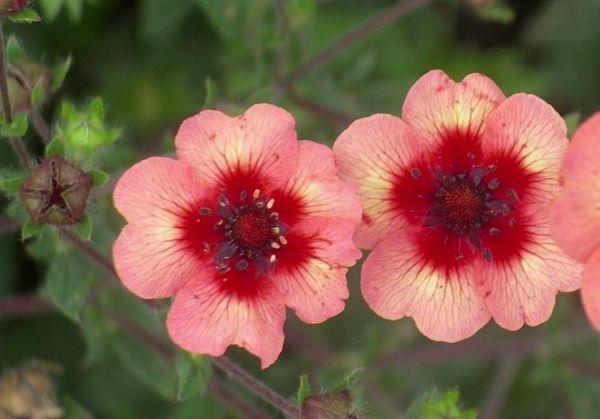
In addition to a large number of advantages, the shrub also has disadvantages:
- The substances contained in the plant provoke drowsiness and reduce alertness. Therefore, drinking broths is transferred after important events.
- Hypertensive patients need to take medicine from Potentilla under the supervision of a doctor. It tends to lower blood pressure.
To avoid unforeseen reactions from the body, Potentilla is taken after consulting a doctor. The specialist draws up a treatment regimen based on the individual preferences of the body.
Varieties and varieties
Among the large number of existing varieties, gardeners prefer only a few.
Miss Wilmont
Ornamental shrub with beautiful bright cherry-colored flowers. Among the purple stems are a large number of paniculate inflorescences. Miss Wilmont has a long flowering period, which makes planting in the northern regions possible.
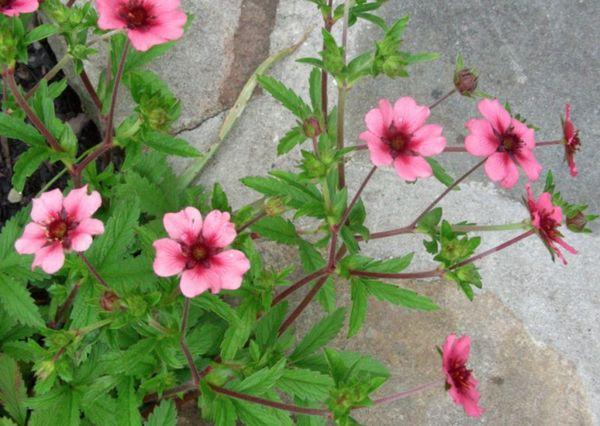
Carmen
The type of Nepalese Potentilla is characterized by the formation of voluminous ground cover clumps. The dark red flowers have yellow veins and symmetrically placed stamens.As in most cases, the calyx has 5 petals.
Carmen flowers are collected in inflorescences or are arranged singly.
The type of Nepalese Potentilla tolerates severe winter frosts and does not require special care. He is also not afraid of a prolonged drought. Winters well under snow cover. To avoid problems with cultivation, darkened places are selected.
Herbaceous perennial Nepalese
Like other types of Nepalese Potentilla, flowers reach 3 cm in diameter. The shrub has a height of 30-85 cm. The spreading stems are covered with strawberry leaves.
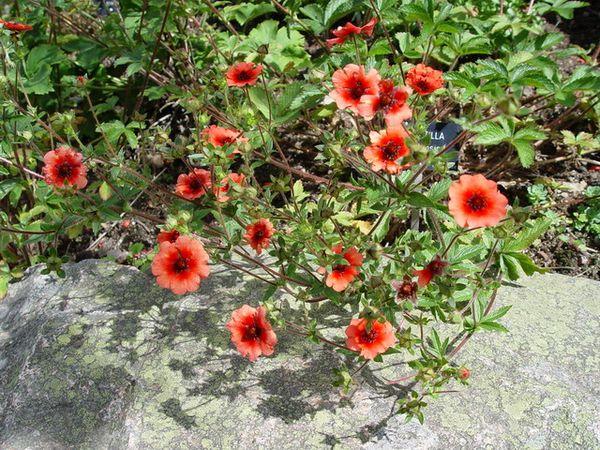
Hybrid Nepalese
It was bred by crossing several varieties of Potentilla. The straight stem of the plant reaches 1 m in height. The leaf plates are not high above the ground.
The flowers are painted in different colors:
- white;
- yellow;
- Dark red;
- pink.
The diameter of the flowers of the hybrid Nepalese Potentilla reaches 5 cm. Collected in inflorescences, they represent a brush or shield.

The nuances of growing a plant
Shrub planting begins with the selection of the optimal place on the site. Finding a suitable one will not be easy, it may be necessary to transplant other plants to free up space. At the same time, Nepalese Potentilla feels great in the wild.
How to choose a landing site
Places for such plantings should be illuminated by sunlight for at least 5 hours a day. If this is not possible, consider the option with penumbra. At the same time, the culture is demanding on the composition of the soil, it is best if it is sandy loam or loamy.
Lack of ultraviolet light negatively affects flowering.
Landing in open ground
For a successful result, the following actions are performed:
- The planting hole should be at least 60 cm deep.
- The bottom of the hole is covered with a drainage layer. For this, fragments of gravel or bricks mixed with river sand are suitable.
- Half the hole is filled with a mixture of sand and soil. Humus must be added to the composition. The proportion is 2: 1: 2.
- A plant is planted, which is covered with clean soil.
In the first 3 weeks, the soil does not dry out. The soil must be constantly moistened.

Useful tips for flower care
If a person knows when and how to plant Nepalese Potentilla, that's good. But this is not enough. The shrub will delight with beauty if it receives proper care.
Watering
Regarding young seedlings, watering questions do not arise. An adult crop needs soil moisture every 2 weeks. No stagnation of water should form on the ground. Cold water is also excluded, as it will destroy the roots of the plant.
Top dressing
The introduction of organic or mineral fertilizers is carried out if the land was depleted. The procedure is carried out in the last days of summer.
Pruning
During the flowering period, the shrub is regularly cleaned of leaves and inflorescences that have dried up. This procedure prolongs the flowering period. So that the shrub does not lose its decorative appearance, it should be cut. It is held no more than 2 times per season.
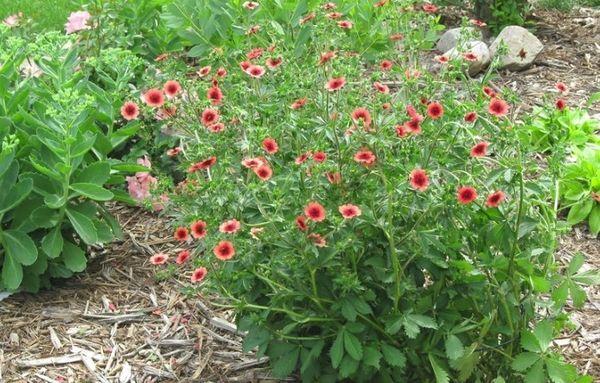
Anti-aging pruning is performed every five years. This is done in the spring, while the shrub has not had time to wake up from hibernation. The stems are cut to the base.
Protection of Potentilla from diseases and pests
The main enemy of Potentilla is the scoop, which eats flowers and leaves of the bush. Refusal to solve the problem threatens the death of the plant. To combat the scoop, insecticidal solutions are used, with which the ground parts of the crop are treated.
Occasionally traces of rust are noticed on the bush. It occurs, as a rule, through the fault of a person. Rust is the result of improper watering caused by stagnant water.Systemic fungicides and Bordeaux liquid will help to cope with the problem. Other diseases do not "bother" Nepalese cinquefoil.
How to properly propagate a plant?
The beauty of Nepalese Potentilla amazes gardeners, and they have a desire to plant new shrubs on the site. To do this, you do not have to go to stores and buy seedlings or seeds. A person can use what he has.
Shrub propagation methods are as follows:
- grafting;
- dividing the bush;
- seeds;
- layering.
Most often, a vegetative reproduction method is chosen, since it is considered the fastest and most effective. The cut off parts of the shrub quickly form a root and are suitable for planting in spring, summer and autumn. Few growers decide on the reproduction of Potentilla by seeds. But their efforts also bring results, so this method is chosen at will.
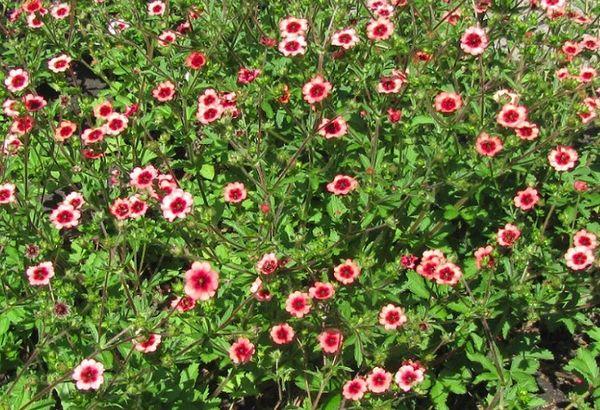
The planted sprout often does not take root and dies after a short period of time. This is due to several factors - the wrong location and soil quality. Such nuances must be taken into account.
Nepalese Potentilla in landscape design
The good thing about the shrub is that it can be used as a single planting and create complex flower arrangements. The plant does an excellent job if you want to cover empty areas. Perfectly decorates curbs and masks bare and ugly bushes from other plantings.
To create flower arrangements or decorate flower beds, cornflowers, lupins and bells are chosen as neighbors. Nepalese cinquefoil has a peculiarity to focus on plants with faded flowers. This is a winning option anyway.
Nepalese cinquefoil is a real garden decoration without exaggeration. Moreover, everyone can maintain the decorative appearance of the shrub, since it is not difficult. Thanks to these moments, the culture became popular among gardeners.
